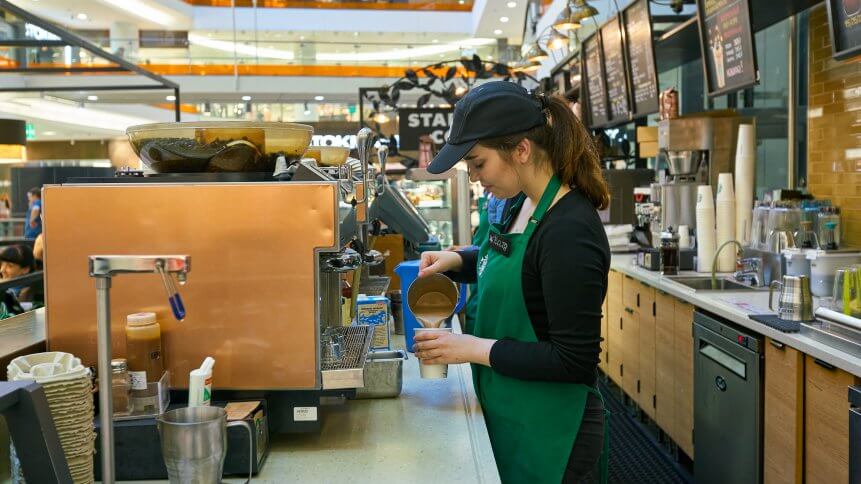Does ‘unique and proprietary’ still matter?

In the past, companies could gain market share by offering unique products and services. But the digital ecosystem has changed old rules of competition.
Your business might be able to do something completely different. You may have patented your techniques or technology. You may feel like this gives you an upper hand. And you may watch, dismayed, as a competitor breezes past, with a commoditized product and a reliance on widely available, third-party vendors. Being different is not the same thing as being effective.
Does the concept of “unique and proprietary” still matter in the way that it once did?
Starbucks sits at the center of this competitive shift and strategic debate. Recently, while drinking my preferred mermaid-emblazoned blend, I found myself staring at a sign next to one of their machines: “Our proprietary Clover brewing system reveals the vibrant layers of aroma and flavor in each Starbucks Reserve coffee.”
And I wondered, does Starbucks really need to have anything proprietary?
Perhaps if someone finds themselves wondering why they’re paying 8 dollars for a coffee drink, the notion of a proprietary system provides some measure of assurance. They’re told that they’re getting something that they can’t get elsewhere.
But also, it’s Starbucks. The company has an established brand, anchored by 30,184 stores. Like Apple, the Starbucks brand gives consumers a way of signaling their social identity. It transcends coffee and also provides consistency. If consumers want the highest possible coffee quality, they might not go to Starbucks. There are hole-in-the-wall, indie, artisanal cafés for that— the “third wave of coffee.”
YOU MIGHT LIKE

Business SaaS enjoys Wall Street attention
Howard Schultz, former Starbucks Chairman and CEO (and current US presidential hopeful) is no stranger to this discussion. In an old memo from 2007, Schultz issued a warning about the commoditization of the Starbucks brand and experience. Streamlined store designs removed the warm feeling of a neighborhood store, replacing it with a sterile, cookie-cutter impression. New, tall machines obstructed the ability of customers to watch their drinks being made, which led to a less intimate barista dynamic. The company had prioritized rapid growth, development, and scale but in the process, they watered down the Starbucks experience and commoditized their brand, according to Schultz.
This is not limited to coffee.
Executives, marketers, and CTOs face the same dilemma. Should they accept that a variety of factors have made it harder and harder to stand out? Should they instead try to gain market share by rapidly analyzing and acting on data, snapping up competitors, and recruiting the best talent?
The Amazon Marketplace has also led to the commoditization of goods. Most products are of relatively good quality. They can be returned easily. They can be rated online. Therefore, the focus has shifted to price. The word “proprietary” doesn’t even enter into the consumer thought process. Amazon itself has entered the broader marketplace and is now directly competing against merchants with the “Amazon Essentials” and “AmazonBasics” brands. Under this labeling, Amazon offers commoditized but perfectly functional dress socks, yoga leggings, electronic cable adapters, etc.
Businesses are beginning to accept that certain products can no longer win on the basis of “unique.” They have to lower their prices. This can be difficult for small and medium-sized enterprises to do when multinational technology companies like Amazon have dominated both data and supply chains.
YOU MIGHT LIKE

Tech giants release subscriptions, not products
But the unique/proprietary discussion goes even further than manufacturing and pricing. There are also the tools used behind the scenes. In the past, a company might have developed proprietary technologies in-house or retained the services of an IT consulting firm. But that tactic is becoming increasingly irrelevant in the age of SaaS and cloud. AWS, Microsoft Azure, and others provide secure, affordable cloud computing platforms and services. IT buyers at brands which are end-users of technology often find that third-party solutions provide them with exactly what they need, while also saving them significant costs and hassle.
Still, some big brands are buying tech companies with the hope that they will gain a competitive advantage by exclusively owning something.
McDonald’s recently made a US$300 million acquisition of a tech company that empowers more personalized and adaptive electronic menus. In a statement, Chief Executive Officer Steve Easterbrook explained, “Technology is a critical element of our velocity growth plan.”
When asked if it ever makes sense for an IT buyer at a brand to develop technology in-house, Wendy Grad, a partner at Bain & Company, told TechHQ: “In-house bespoke systems and software are, indeed, making less and less sense as we see a proliferation of external martech providers delivering solutions to empower marketing organizations.
“However, this does not mean you are outsourcing your people. Integrating these disparate solutions, getting the most out of them, and converting the analytics coming off of them into insights is absolutely necessary to get any ROI out of these investments.”
As the digital ecosystem continues to grow and evolve, companies will continue to adapt. Questions surrounding the importance of unique/proprietary are far from resolved.
Wendy Grad also noted that some upstart insurgent brands have been able to differentiate on qualities other than price and have addressed changing consumer needs more quickly than major brands.








